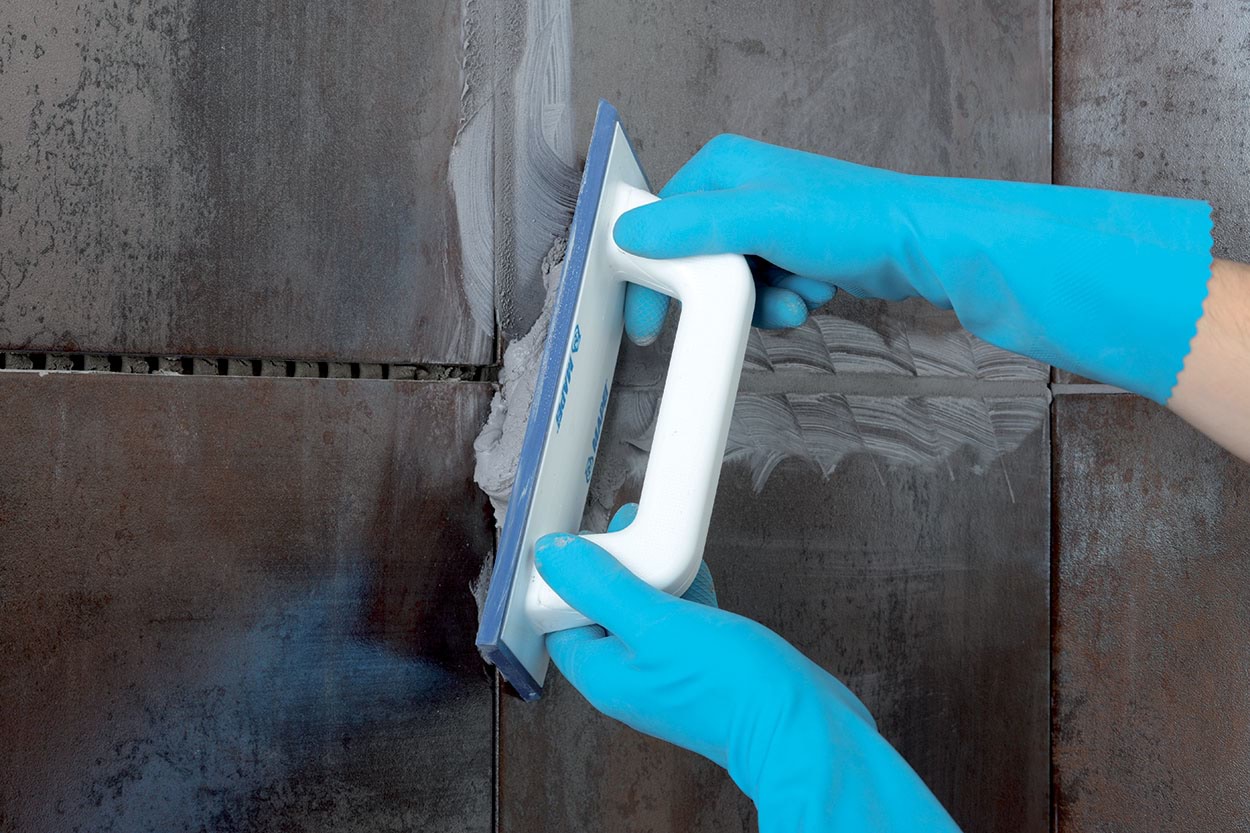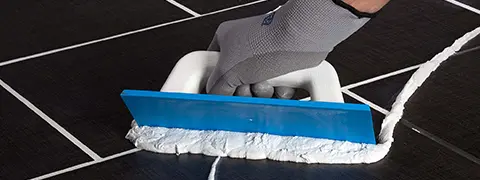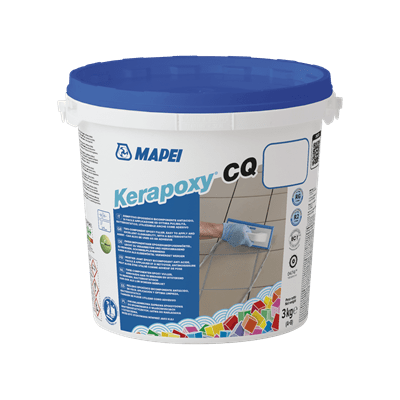
The key role played by grout lines in making tiling more durable
The Italian division of Mapei Technical Services presents a brief technical note to explain how the performance properties of grout lines have impacted sites all around the world and had a significant effect on the durability and performance levels of ceramic floor and wall dressings.
Central element for durable tiling.
Joints are an essential feature of what is defined by many standards as ceramic tiling. They are important for both aesthetic and technical reasons which play a part in achieving the final result.
We consider the technical aspects of joints to be the priority because they increase the durability of ceramic tiling by reducing the risk of problems arising such as detached tiles, cracking and out-of-flatness, all of which have a direct effect on the expected service life of the ceramic covering itself. Well designed and correctly filled joints can help extend the service life of ceramic tiling.
And how do they do this? Joints are basically a way of maintaining the continuity of a tiled surface and modify its modulus of elasticity, making the entire tile/grout line system more “deformable” and, as a result, able to withstand the dimensional stresses it will be subjected to during its service life.
An area of ceramic tiling with no joints has a modulus of elasticity almost the same as a single, large ceramic tile. As a result, the surface will be extremely rigid and be more likely to break or detach from the substrate than an area of tiling with joints, due to dimensional instability in the substrate caused mainly by the hygrometric shrinkage of the substrate (if it is not fully cured when installing the tiles), expansion or contraction in the substrate or tiling (if there are significant variations in temperature), the deformability of the installation surface (due to flexural deformation), vibrations, settling, etc.
To summarise, a covering with a lower modulus of elasticity will be better at absorbing these effects and reducing the risk of breakages and/or detachment. It follows, therefore, that joints are very important to safeguard the integrity and durability of ceramic tiling.
NOT ONLY DURABILITY
It is also important to consider that there are other advantages from a technical-performance point of view of having joints in tiling. They reduce the influence of differences in dimensions between the tiles and make it easier to control that the joints are filled evenly and are longer lasting, thereby extending the service life of whatever type of material is used to fill them.
No less important is the aesthetic aspect of joints, which is achieved during the execution phase and during the sealing/grouting phase of the joints, in which the characteristics of the products become extremely important. It is essential, therefore, to rely on good quality products with high performance properties, such as KERACOLOR, ULTRACOLOR PLUS, KERAPOXY and FLEXCOLOR product ranges comprising the cementitious grouts by Mapei.
THE MOST SUITABLE GROUT FOR EACH TYPE OF JOINT
Which material to use depends on the performance properties required and on the area of use.
Epoxy grouts are preferable when you require a product with no absorption, high resistance to chemicals and a high level of hygiene, such as in industrial floors, industrial kitchens, canteens, laboratories, etc.
All the products in the KERAPOXY family can be used for joints in floors, walls, work-tables, etc. in compliance with the principles of HACCP (Hazard Analysis and Critical Control Points) guidelines and the requirements of EC Regulation No. 852/2004 for the hygiene of foodstuffs.
High performance acrylic and cementitious grouts, such as FLEXCOLOR, KERACOLOR and ULTRACOLOR PLUS product ranges, are normally used in surroundings where you require a high-performance product without reaching the same level of characteristics as for epoxy grout.
Mapei cementitious grouts, however, also have properties such as DropEffect® (water-repellence) or BioBlock® (anti-mould) technology.
EPOXY GROUTS
It also very important to note that epoxy grouts are becoming increasingly popular in the residential sector.
The constant increase in the size of tile formats we have witnessed over the last few years has, on the one hand, led to a reduction in the overall area joints have to cover but, on the other hand, has made the role joints play in tiling systems even more important because of the higher levels of induced stress generated by larger formats and the need to reduce the “rigidity” of tiling as much as possible.
Low consumption rates per square metre and the introduction of epoxy grouts that are easier to use (a case worthy of mention for us in Italy, for example, was KERAPOXY DESIGN or KERAPOXY CQ) have encouraged the introduction of epoxy grouts for residential/commercial buildings, while in the past they were only used in the industrial sector. Nowadays, it is not uncommon to also see epoxy grouts used in homes and shops, or at least in more stressed areas such as bathrooms and kitchens, where a non-absorbent grout that is easier to clean and hygienise is the ideal solution.
It is worth remembering at this point that KERAPOXY CQ has been certified according to ISO 22196:2007 standards by the University of Modena (Italy) as a grouting mortar protected against the formation and proliferation of micro-organisms, which means it is particularly suitable for use in combination with ceramic tiles with similar characteristics, such as in the healthcare sector, to create ceramic surfaces with extremely high levels of hygiene.
It is clear that joints have a very important role to play in the design and installation of ceramic covering and their presence has a direct effect on the durability and quality of ceramic coverings. It is important, therefore, to design tiling with joints dimensioned according to the specific characteristics of each single project and the conditions the surface will be exposed to, and also in compliance with current standards (such as UNI 11493-1).
And it is just as important to choose suitable products to fill joints, products that have the right mechanical characteristics and properties, comply with international reference standards (UNI EN 13888) and which are aesthetically pleasing, eco-sustainable and durable.
To conclude, it is important to mention that Mapei grouts also comply with the EMICODE classification system issued by GEV, which has demonstrated its value from a practical point of view for materials with very low emissions. Materials awarded this marking comply with the most stringent environmental and health requirements.
This means that our products have very low emission of volatile organic compounds and protect, therefore, the health of those who use them and of those who live in the surroundings where they are used.
We invite you to contact Mapei Technical Services of your country to define the most suitable product for your particular needs, according to the effective characteristics and performance properties required.

















